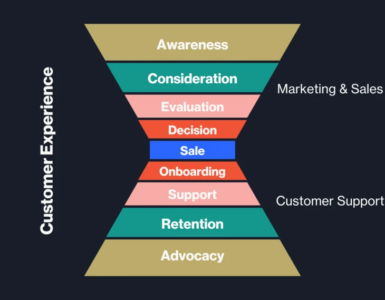In this comprehensive blog post, we’ll explore the centralised model’s intricacies, examine its advantages and disadvantages, and examine real-world examples and case studies to illustrate its effectiveness.
What is a Centralised Digital Marketing Team?
A centralised digital marketing team is a distinct department within an organisation, typically reporting directly to the Head of Marketing or a similar senior executive. This team manages and executes all digital marketing activities, including SEO, social media, content marketing, email marketing, paid advertising, and web development.
This structure creates a clear chain of command and centralised control over all digital marketing efforts.
Benefits of a Centralised Digital Marketing Team
The centralised model offers several compelling benefits, making it an attractive option for many businesses. Let’s take a closer look at some of the key advantages:
1. Clear Chain of Command and Control
One of the most significant advantages of a centralised digital marketing team is the clear chain of command and control it establishes. With all digital marketing activities consolidated within a single department, there is a clear hierarchy and decision-making process.
This eliminates confusion and ensures everyone is on the same page, working towards common goals. It also facilitates faster decision-making and streamlines communication, improving efficiency and productivity.
2. Consistency in Branding and Messaging
Maintaining a consistent brand image and messaging across all digital channels is crucial for building brand awareness and trust. A centralised team ensures that all marketing efforts align with the overall brand strategy and messaging guidelines.
This consistency helps create a cohesive and recognisable brand identity, strengthening the brand’s presence in the digital space.
3. Efficient Resource Allocation and Management
A centralised team allows for more efficient resource allocation and management. With a dedicated team focusing solely on digital marketing, resources such as budget, personnel, and technology can be allocated and managed more effectively.
This ensures that resources are utilised optimally, maximising digital marketing efforts’ return on investment (ROI).
4. Specialisation and Expertise
A centralised team allows for greater specialisation and expertise within the digital marketing domain. Team members can focus on specific areas of digital marketing, such as SEO, social media, or content marketing, and develop deep expertise in their respective fields.
This specialisation improves skills and knowledge, resulting in more effective and impactful digital marketing campaigns.
5. Streamlined Collaboration and Knowledge Sharing
Collaboration and knowledge sharing are streamlined in a centralised team. Team members work closely together, sharing insights, ideas, and best practices, fostering a culture of continuous learning and improvement.
This collaborative environment promotes innovation and creativity, leading to more effective and cutting-edge digital marketing strategies.
Challenges of a Centralised Digital Marketing Team
While the centralised model offers numerous benefits, it has its share of challenges. Let’s examine some of the potential drawbacks:
1. Lack of Agility and Flexibility
One potential challenge of a centralised team is a lack of agility and flexibility. With all decision-making centralised, the team may struggle to adapt quickly to changing market trends or customer needs.
This can hinder innovation and responsiveness, potentially disadvantaging the business in the fast-paced digital landscape.
2. Siloed Mentality
A centralised team can sometimes lead to a siloed mentality, where team members become isolated from other departments within the organisation.
This can hamper collaboration and knowledge sharing with other teams, such as sales or product development, leading to missed opportunities and inefficiencies.
3. Limited Understanding of Local Markets
In large organisations with a global presence, a centralised team may struggle to understand the nuances of local markets.
This can lead to marketing campaigns that are not culturally relevant or effective in specific regions, hindering the brand’s ability to connect with local audiences.
4. Overburdened Team Members
Sometimes, a centralised team can become overburdened with work, especially in organisations with a large digital presence.
This can lead to burnout, decreased productivity, and increased employee turnover, which can impact the overall effectiveness of digital marketing efforts.
Examples and Case Studies
Several well-known companies have successfully implemented the centralised digital marketing team model. Let’s take a look at a couple of examples:
1. HubSpot
HubSpot, a leading inbound marketing and sales software company, has a centralised digital marketing team that manages all aspects of its online presence. This team creates and executes content marketing, social media, SEO, and paid advertising campaigns.
HubSpot’s centralised approach has enabled them to maintain a consistent brand image and messaging across all digital channels, contributing to their significant growth and success.
2. Airbnb
Airbnb, a global online marketplace for lodging and experiences, also has a centralised digital marketing team. This team oversees all aspects of Airbnb’s digital marketing efforts, including brand marketing, performance marketing, and social media.
Airbnb’s centralised model has helped it achieve remarkable growth and brand recognition, establishing it as a leader in the sharing economy.
Is a Centralised Digital Marketing Team Right for Your Business?
The centralised digital marketing team model offers several compelling benefits, including a clear chain of command, consistency in branding and messaging, efficient resource allocation, specialisation, and streamlined collaboration.
However, it’s important to be aware of potential challenges, such as a lack of agility, a siloed mentality, a limited understanding of local markets, and overburdened team members.
Whether a centralised model is right for your business depends on various factors, including the size of your organisation, industry, target markets, and overall marketing goals.
A centralised team might be the ideal choice if you’re looking to establish a clear chain of command, maintain consistency in branding and messaging, and optimise resource allocation.
However, a decentralised or hybrid model might be more suitable if you need greater agility, flexibility, and local market understanding.
Ultimately, the key is to choose a structure that aligns with your business needs and enables your digital marketing team to achieve its full potential.





Add comment